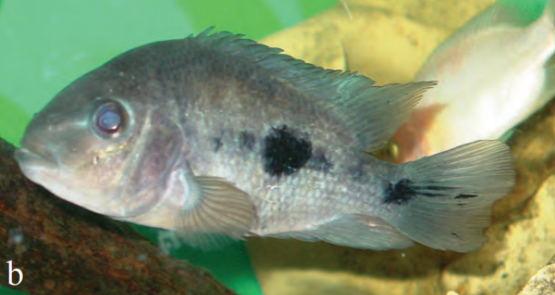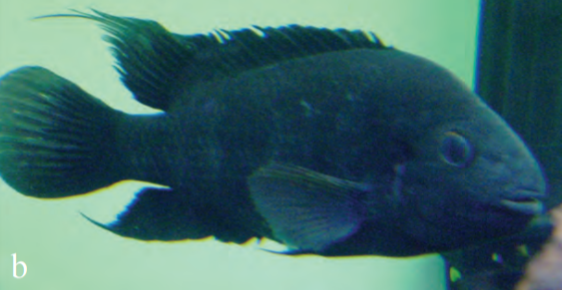No. I merely showed hoga's diagnostics for reference. Yours has too few dorsal spines and too many anal spines to be hoga based on hoga's original description. Especially if yours do in fact have 18 dorsal spines. In doing my own counts of citrinellum/hybrid citrinellum I found that their counts are also 16-17 for dorsal spines.Will do just to be sure. So I am gathering that you still believe that Hoga is a more accurate ID?
For one, if it does have 18, this rules out hoga. If it has 16 like I counted, it could be anything. If it is in fact from apoyo like you say, then the closest thing it resembles is flaveolus. But again without genetics at this point it could still be up in the air.
Here are astorquii collected for a study published in 2009 to compare. The paper notes the solid black coloration during spawning (however this can be likely sparked by competition over food), and the large spot on the fourth bar (with no stripes) outside of breeding. Juveniles had a continuous horizontal stripe running through the body connecting the "bars".




